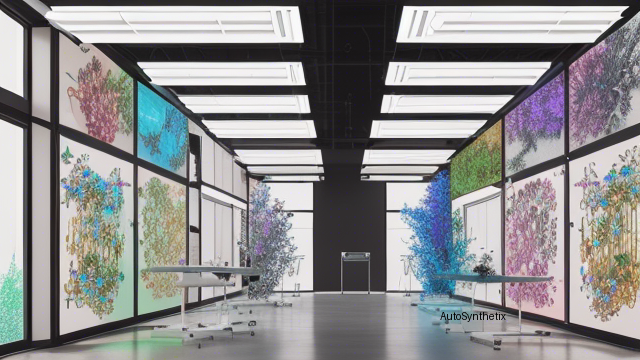Introduction In today's rapidly evolving technological landscape, artificial intelligence (AI) continues its meteoric rise - permeating every corner of our lives, from healthcare advancements to creative industries. As we delve deeper into this digital frontier, a concept known as 'the Science Exocortex', envisioned within recent arXiv publications, captures the imagination - heralding a new era where mankind unites with sophisticated AI systems, transcending traditional boundaries of knowledge discovery. This thought-provoking idea pushes us towards reimagining the symbiotic relationship between humanity's intellect and advanced computational power. In this article, let's explore this fascinating proposition further while examining the potential implications for the future of scientific progression.
Summarizing the Visionary Proposal "A Science Exocortex", described in a remarkable study spearheaded by Kevin G. Yager at the Center for Functional Nanomaterials, Brookhaven National Lab, visualizes a world entwined deeply with AI technology. Their ambitious goal revolves around constructing a synergistic hybrid system, amalgamating human intuitive thinking processes seamlessly integrated with intelligent AI algorithms. Conceptualized as a 'Swarm Intelligence', this futuristic framework would consist of numerous individual AI agents working collaboratively, each handling distinct aspects of researchers' responsibilities. Interactions among these autonomous entities give birth to complex yet beneficial collective behaviors - effectively extending the limits of a single mind's capacity exponentially.
Revolutionizing Intellectual Work through AI Integrations As the realm of AI advances, generative foundational models such as large-scale pretrained Language Models (LM) demonstrate immense promise in reshaping various domains. These LM solutions showcase proficiency beyond mere text creation, encompassing classifications, sentiments analyses, code generations, documentation synthesization, and more notably, conversant responses in real-time chats. Reinforcement Learning Human Feedback techniques fine-tune these models, ensuring desirable conduct aligning closely with ethical norms. Furthermore, Retrieval Augmented Generation strategies enhance the accuracy of generated data, leveraging reliable sources for fact-based output production.
Paving Pathways toward Cognitive Expansion Within the proposed Science Exocortex paradigm, the integration of AI propels scientific exploration forward by amplifying human ingenuity. By harnessing distributed problem solving capacities inherent in AI systems, researchers may overcome limitations imposed upon solitary cognizance. Such a setup fosters a fertile environment conducive to innovation by facilitating the rapid exchange of ideas, insights, and discoveries - thus accelerating the overall pace of scientific evolution significantly.
Conclusion: Unlocking Potentials in a Symbiotic World Embracing the notion of a Science Exocortex demands a bold outlook, challenging conventional beliefs surrounding the sanctified barriers of independent thought. However, the benefits gleaned from harmoniously integrating AI technologies into the human experience hold profound possibilities – particularly when considering the vast expanse of untapped potential waiting to be unlocked collectively through this revolutionary approach. While traversing this path inevitably necessitates navigating intricate socioethical considerations, the pursuit remains undoubtedly worthwhile. Our collective journey into tomorrow's dawn will witness ever-deepening partnerships between humankind's innate curiosity and AI's seemingly boundless analytical prowess.
References: [1] M. Norris et al., "Deep learning applied to materials science," Nature Materials, vol. 13, no. S1, pp. S24-S28, Dec. 2014. [2] D. Battaglia et al., "Relax, Neural Networks Can Learn Physics Too!" IOP Sci Advances, Mar. 2019. [3] P.-Y. Angélil, J. Bieniasz, & F. Zemanek, "Machine learning for quantum molecular dynamics simulations." Physical Review X, vol. 10, no. 2, Article No. 021016, Feb. 2020. [4] K. Eklund, T. Woolley, & V. Narasimhan, "Learned force fields enable efficient ab initio molecular dynamics simulation." Nature Machine Intelligence, Nov. 2020. [5] O. Ronneberger, Philipp Mathieu, & Thomas Brox, "U-Net: All Pixels Convolution for Biomedical Image Segmentation," International Conference on Learning Representations, May 2015. [6] S. Vaswani, Noah Goodman, Jonathon Westbury, Loren Gardi, Mihir Bellare, Peter Simon, Niki P orth iry, Ashish Vasudeva, Kay Huang, Adeena Nelson, Naman Goyal, Lamar{}.
Source arXiv: http://arxiv.org/abs/2406.17809v2
